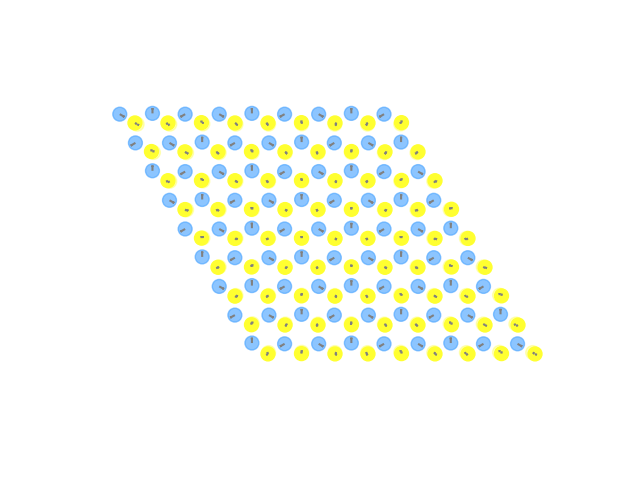Molecular dynamics using i-PI
This example shows how to run the i-PI code for
path-integral molecular-dynamics simulations using potential-energy surfaces
generated by elphmod. It performs a supercell geometry optimization for a
nearest-neighbor model of TaS2. The Python package ipi must be installed.
If you use this in your work, please cite: A. Schobert, J. Berges, E. G. C. P. van Loon, M. A. Sentef, S. Brener, M. Rossi, and T. O. Wehling, Ab initio electron-lattice downfolding: Potential energy landscapes, anharmonicity, and molecular dynamics in charge density wave materials, SciPost Phys. 16, 046 (2024).
#!/usr/bin/env python3
# Copyright (C) 2017-2025 elphmod Developers
# This program is free software under the terms of the GNU GPLv3 or later.
import elphmod.models.tas2
import subprocess
import time
try:
import ipi_driver
except ModuleNotFoundError:
import ipi._driver.driver as ipi_driver
el, ph, elph = elphmod.models.tas2.create(rydberg=True, divide_mass=False)
driver = elphmod.md.Driver(elph, nk=(12, 12), nq=(2, 2), supercell=(9, 9),
kT=0.02, f=elphmod.occupations.marzari_vanderbilt, n=1.0)
driver.kT = 0.005
driver.f = elphmod.occupations.fermi_dirac
driver.random_displacements(amplitude=0.05, reproducible=True)
driver.to_xyz('init.xyz')
subprocess.Popen(['i-pi', 'input.xml'])
time.sleep(2) # wait for i-PI to load and create a socket
driver.plot(interactive=True)
ipi_driver.run_driver(unix=True, address='localhost', driver=driver)
driver.plot(interactive=False)
driver.plot(filename='md.png')
